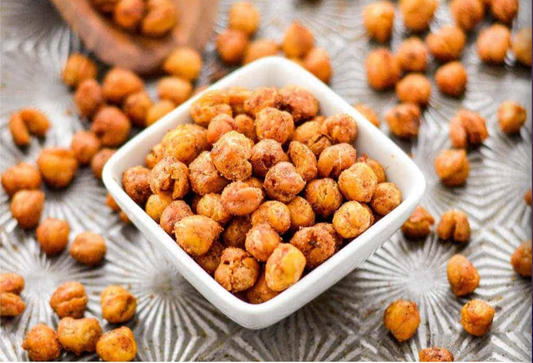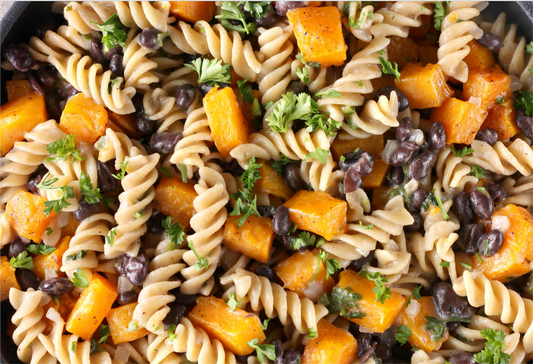My name is Emilie Trottier and I’m excited to be working closely with BODZii as a dietitian to support every member on their health and weight loss journey. You’ll be seeing me more often on the BODZii blog helping you understand your body along your health and weight loss journey.
As a Dietitian and Certified Diabetes Educator, I work with many clients who struggle with some form of blood sugar dysregulation. I often get asked “what does insulin resistance mean?” and “if I have it, what can I do about it?”.
Today’s post is all about blood sugar and insulin. We will go over:
- the tight bond that blood glucose and insulin have in the body
- insulin resistance and what it means
- risk factors that may put you at risk for insulin resistance and the science behind it all.
In a follow-up blog, Robyn will cover some lifestyle habits that may help prevent, improve, and manage insulin resistance so make sure you stay tuned on the blog or subscribe to our email list so you never miss an article.
What is Insulin?
Insulin is a hormone that is made in your pancreas that controls the amount of glucose in your bloodstream at any given moment. It helps store glucose in your liver, body fat, and muscles. It also regulates your body’s metabolism of carbohydrates, fat, and protein. Sound like an important hormone? That’s because it is. Without proper insulin function, your body can’t store energy properly.
Why do we need sugar in our blood?
Sugar gets a bad rep. But when it comes to our bodies, sugar is essential. In order to stay alive, every cell in our body needs energy to function. Point blank, glucose is THE main fuel source for the body. It’s essential for keeping all of our systems working. It also prevents our bodies from breaking down protein for energy. The body has a very fine window it likes to stay in when it comes to blood sugar regulation. It works hard to ensure that is maintained, and sends us signals when things are going south. For example, when your blood sugar dips, the “hangry” mode turns on, making you may feel hungry, light headed, shaky, all things that would lead you to want to consume foods that will bring your blood sugar back to within its happy range.
A normal insulin-glucose cycle
When we eat food, our bodies break the food down into their most basic parts (with the help of many enzymes, which we won’t get into in this article!). Foods with carbohydrates break all the way down to glucose. This is the only way carbs can get into the bloodstream, in their most basic form - glucose. The rising of blood glucose sends a message to the pancreas to release insulin in order to bring blood glucose levels back to a normal level. Insulin brings the glucose to cells to be stored as energy. Insulin also regulates fat cell metabolism. When insulin is high, that sends a signal to fat cells to hold off on releasing energy.
Inversely, when insulin levels drop, the body will release energy from cells (muscle, liver, fat) and distribute to the body as needed. This is a normal cycle.
What is insulin resistance?
Okay so now that we know insulin’s role, let’s get into what happens when the cycle isn’t working as it should. For reasons not fully understood by the science community, insulin resistance happens when cells have a reduced response to normal circulating concentrations of insulin.
They do not open to allow glucose in. When glucose levels stay elevated in the blood, the body may produce more insulin to get the glucose in the cells. Even when blood glucose levels appear normal, insulin patterns are not.
Elevated insulin levels have other effects. Insulin also regulates fat metabolism which means fat cells don’t get the message to keep storing their fat when insulin is in the blood. Thus, fat gets released from fat cells and circulates in the blood thinking that it is needed. This results in higher than normal fat levels, something called hypertriglyceridemia. When fat doesn’t get used, it is resorbed through the liver and part of it gets reconverted to glucose which again stimulates insulin to be released, and placed back into fat cells. And the cycle goes on.
Insulin resistance is often seen in women with polycystic ovarian syndrome (PCOS), an excellent topic for a future blog! Insulin resistance is also linked to the progression of conditions such as prediabetes, type 2 diabetes, and cardiovascular disease. As mentioned, although much remains to be discovered about the condition, the research strongly links lifestyle, central obesity, genetics, and diet to be likely contributors.
Where body fat is stored matters.
Body fat that is stored more centrally (think around the belly area) appears to be a strong determinant of insulin resistance. And moreso, visceral abdominal fat (the fat located deep and around your organs) is more of a concern than subcutaneous fat (the fat that is closer to the skin). This is important because as mentioned, one of the big organs, the liver, is responsible for making and storing glucose. When the cells from the liver don’t respond to insulin (i.e. insulin resistance), the liver will continue to produce glucose. As a result, blood sugars are elevated. And you can see how the cycle gets so out of whack.
The best way to learn if you are at risk or have insulin resistance is to have bloodwork done through your doctor. If you have central obesity, are sedentary, smoke, eat foods high in refined carbs, sugary items, foods high in fat, and you have a family history of diabetes, it may be something to discuss with your doctor. The silver lining with a condition like this is that majority of the time lifestyle can greatly improve your changes of managing your blood sugar. What we eat, how we move our bodies, and modest weight loss can all reduce our risk. Robyn will break down the lifestyle piece is another article.




